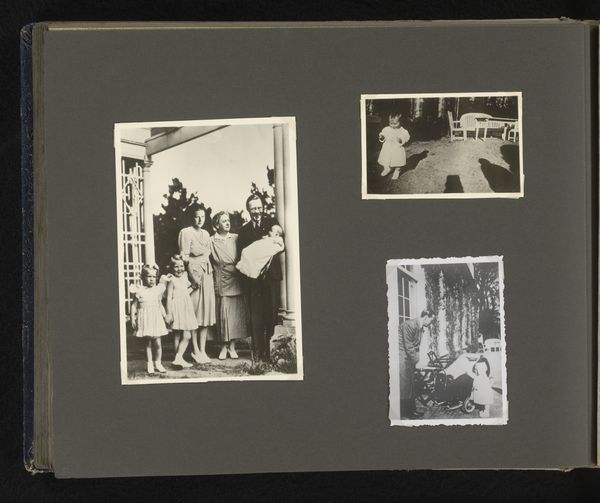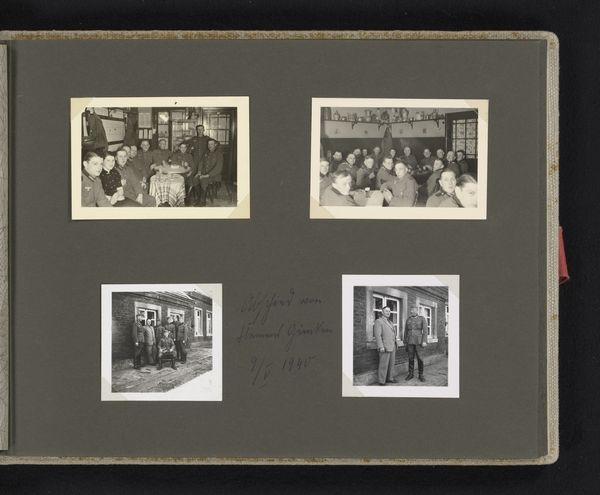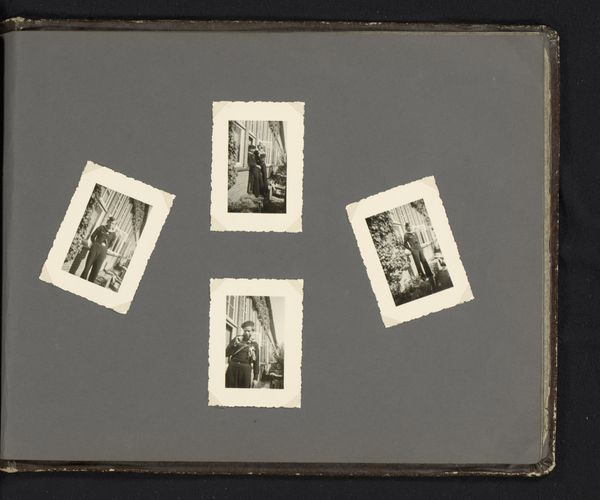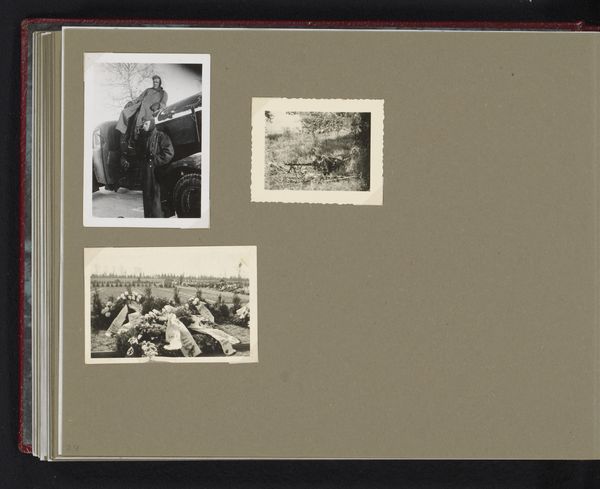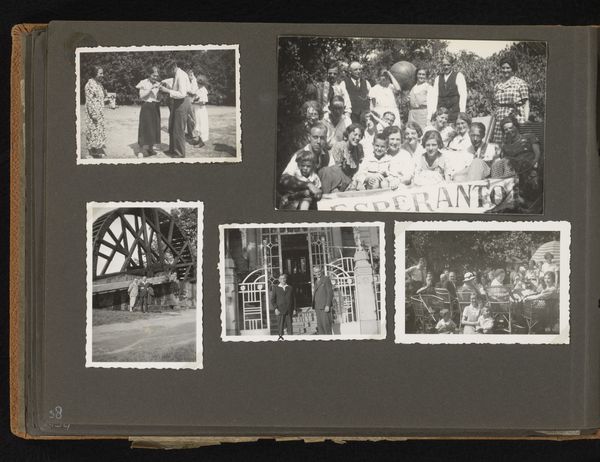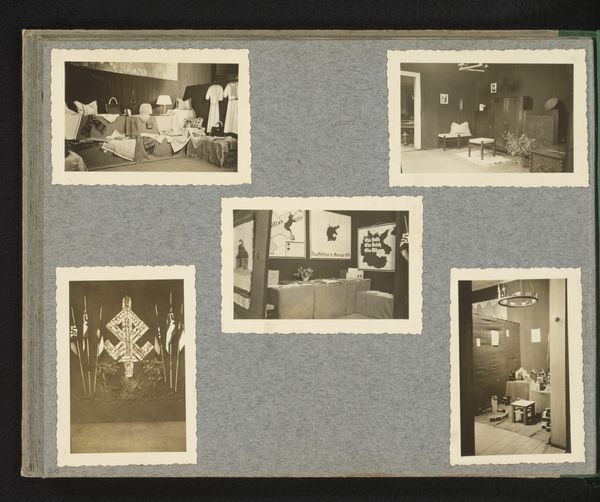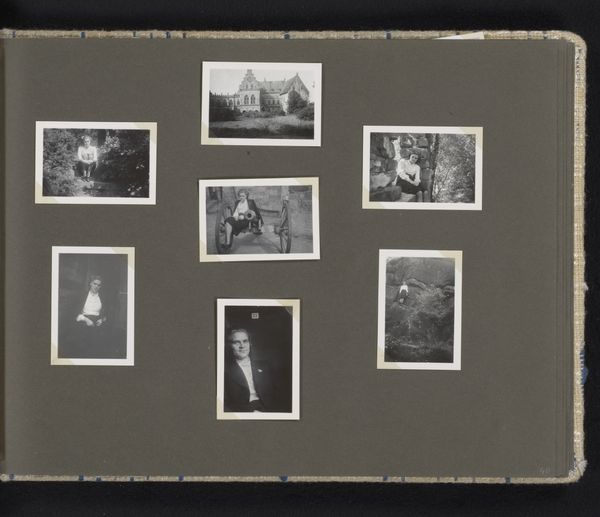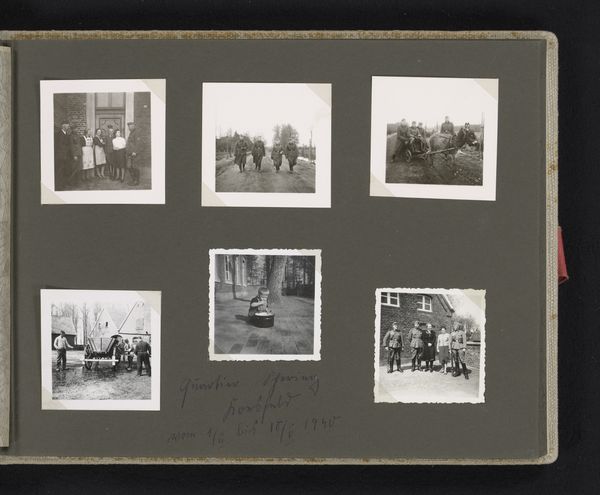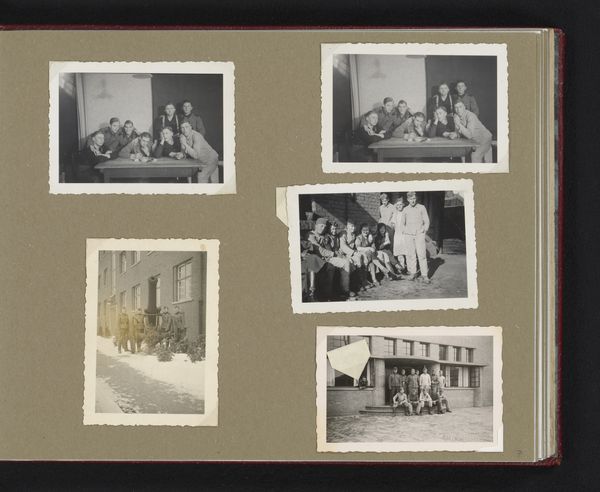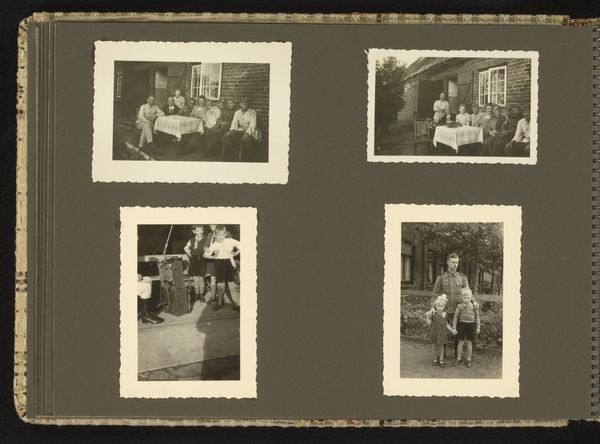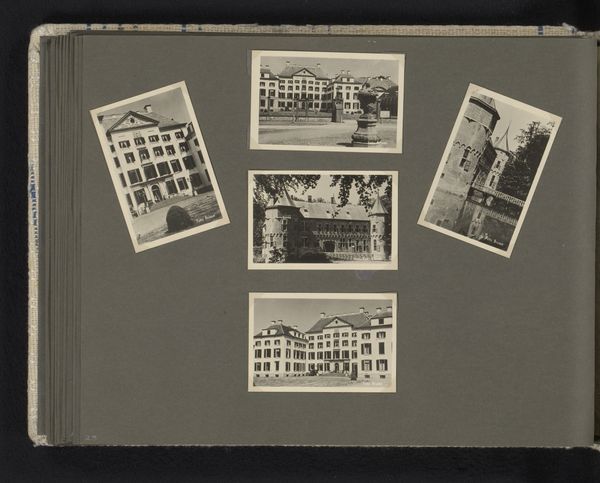
print, paper, photography, gelatin-silver-print
#
print print-like
# print
#
paper
#
photography
#
gelatin-silver-print
#
genre-painting
#
paper medium
#
realism
Dimensions: height 90 mm, width 60 mm, height 220 mm, width 275 mm
Copyright: Rijks Museum: Open Domain
Curator: The work before us, simply titled "Training en corvee," or "Training and corvée," dates from between 1939 and 1943. It's an anonymous work, preserved in the Rijksmuseum. The materials? A gelatin-silver print on paper. Editor: Wow. It hits you with this heavy stillness. Like a freeze-frame of lives lived under immense pressure, these small moments hinting at so much more outside the frame. They feel constrained, not just by the small size, but the greyscale...it's a mood, for sure. Curator: Absolutely. Each snapshot contributes to a larger narrative of enforced labor. We see groups carrying heavy loads, lining up behind scales, peering out windows... the repetition speaks to routine, and the greyscale palette certainly underscores the somber themes present. Notice the almost classical arrangement. The artist gives order to this world but in a somewhat stifling manner. The images appear fixed and controlled in this dark time. Editor: It’s the anonymity that gets me, too. Like these individual lives are subsumed into a greater, grim process. Look at that one with the scale. Is it food? Are they measuring out rations? It feels almost surreal, weighing humanity that way. The repetition creates a kind of rhythm, but it's the rhythm of relentless work, devoid of joy. Is it real life or some allegorical statement about toil and oppression? Curator: That sense of dehumanization is definitely key here. The artist highlights it to be a universal theme throughout history and around the world. By photographing mundane but physically taxing activities under presumably strained circumstances, the print hints at the human spirit subjected to systematic duress and potential resilience amidst this. Editor: It's a haunting image. And the fact it is presented like a scrapbook entry with its raw and torn edges, adds to the intimacy, and the vulnerability. It doesn't just show the physical work, it captures something deeper, something about endurance, and loss. Curator: Indeed. Through symbol, rhythm and subject, it creates a poignant echo, reflecting upon what humans can do to each other and the internal mechanisms that keep people moving. It's why art from these times remains relevant. Editor: Agreed. Art can bring uncomfortable realities back into view and question what it means for the present day, helping us to stay sensitive to oppression and those things we ought never repeat.
Comments
No comments
Be the first to comment and join the conversation on the ultimate creative platform.
